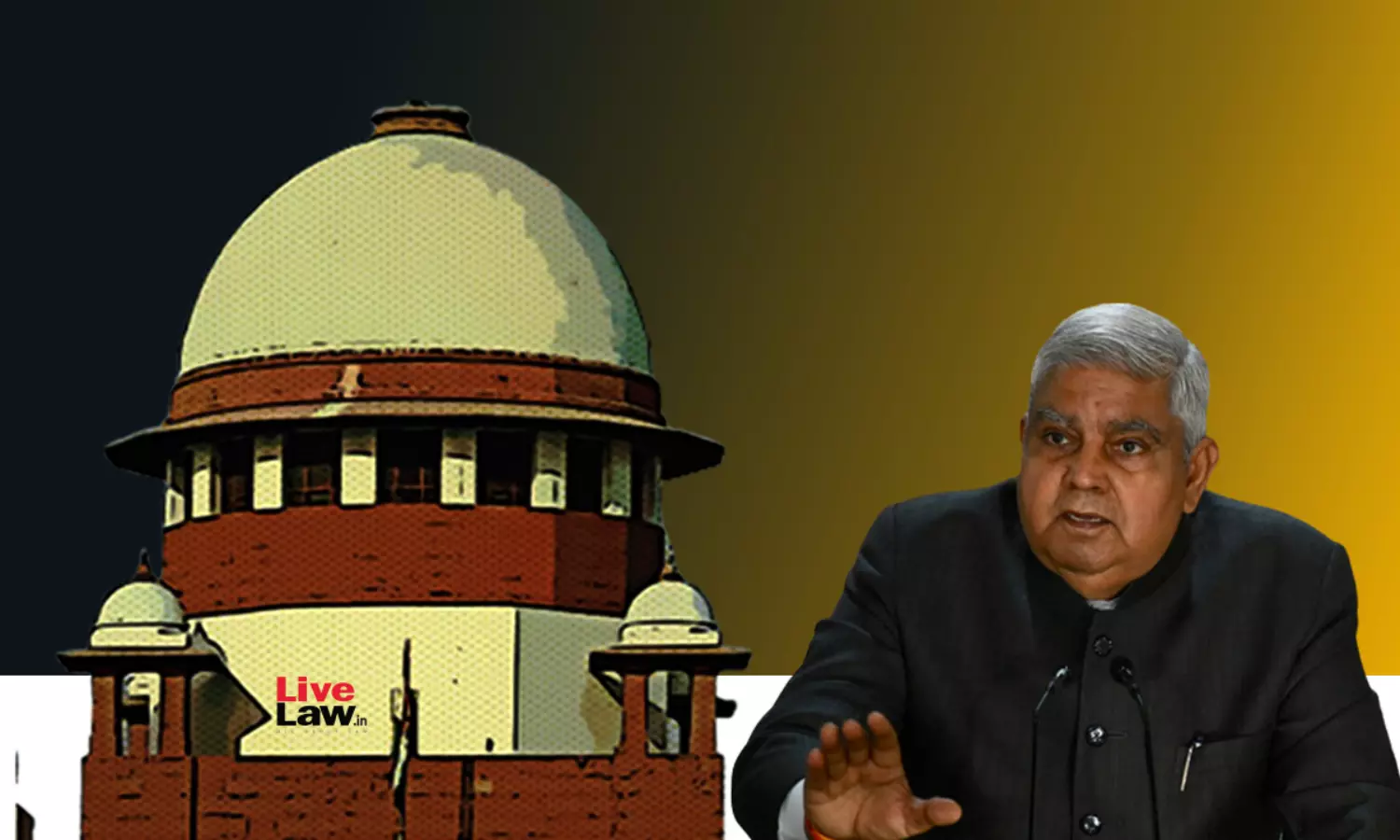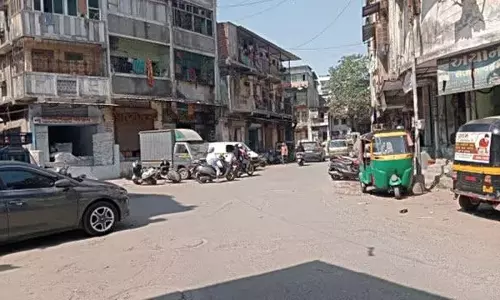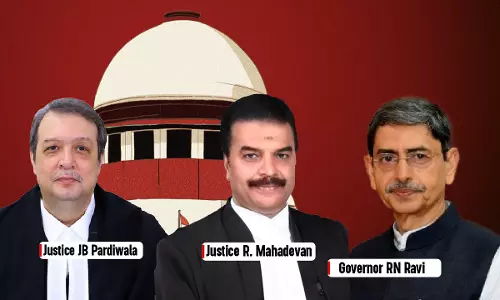
Last September I was invited by NALSAR University students to visit their campus for a talk. While they wanted scholastic content high on the jurisprudence quotient, I was in a more playful mood. So the poor organizers must have raised an eyebrow when I made a strange request. I wanted 13 chairs on the stage. The second request must have cleared the mist. I demanded that name tags be made of...
Last September I was invited by NALSAR University students to visit their campus for a talk. While they wanted scholastic content high on the jurisprudence quotient, I was in a more playful mood. So the poor organizers must have raised an eyebrow when I made a strange request. I wanted 13 chairs on the stage. The second request must have cleared the mist. I demanded that name tags be made of all the judges who heard the Keshavananda Bharati Case and for four other people. Who were in this Gang of Four?
A reticent bunch of bright law students were cajoled into participating in a role play of the greatest constitutional law case ever fought till date in India’s Supreme Court. For good measure, while enlisting student volunteers, in the interest of authenticity, we tried to get persons from the same state to play the justice-a Malayali to enact Matthew, a Bengali to perform as Mukherjea, a Maharashtrian to sketch Chandrachud, and so on and so forth. While language received respect, gender did not. The point that all thirteen were men was not lost and I am proud of the students that they chose a young lady to play the part of Sarva Mitra Sikri CJ. Imagine if in reality 12 jurists had indeed been headed by one woman!
We started right from Golaknath, when a stung Mrs Gandhi along with her “kitchen cabinet” went into mission mode to work on the composition of a future Supreme Court which would be “committed” to the political view point of the dominant ruling party of the day. The Prime Minister’s go to team comprised of Siddhartha Shankar Ray, the Bengal Chief Minister, one of the rare politicians of the day who could call the PM as per her nickname “Indu”. In years to come, Ray would be credited with sharing the idea of an “internal emergency” with Sanjay Gandhi who was rumoured to be the de facto ruler. The second was her own Law Minister, HR Gokhale, who was known to have a great sway over judges from his home state of Maharashtra and of course enjoyed the Prime Minister’s trust. The fourth in this gang was Kumaramangalam - known for trying to push the socialist line in the party. This gang went about securing appointments as per plan- Ray had a hand in getting Mukherjea and Beg JJ, Gokhale-Chandrachud and Parlekar JJ and Kumaramangalam-KK Matthew J.
The legendary Granville Austin claims that when the Court finally took up hearing the Keshavananda Case, the Gang of Four deployed a three-fold strategy to secure a verdict of choice. This involved trying to:
-“discover”- the thinking of the judges. In pre-Pegasus days of the seventies this was attempted in the old fashioned way of sounding out the targeted justices.
-“influence”- this involved pulling out all the stops and requisitioning the help of mentors. For example, the retired Justice Gajendragadkar was roped in to win over his mentee Chandrachud J.
-“delay”- those of you who have jumped at the present day law officers for trying to delay important constitutional law questions like electoral bonds and Kashmir should actually review how ‘delay’ has been a ‘tool’ in the executive’s armoury even decades ago when people even suspected government’s hand in poor Beg J getting himself admitted into a hospital in the middle of the hearing giving a panic attack to Sikri CJ as he had to get the mission accomplished before his impending retirement. In fact, it was quite shocking that the Chief Justice actually landed up at the hospital and consulted to doctors to “personally satisfy” himself of Beg J’s state of health.
The Vice President’s proclamation at a conference of Presiding Officers of the nation’s legislature that the Basic Structure doctrine that the Court gave us in Keshavananda’s Case was anti-democratic and bad law reminded me of that Saturday evening at NALSAR. The irony that this doctrine has been cited with affirmation by constitutional courts across continents, that have relied upon it to contain majoritarian and autocratic actions of governments, is certainly not missed on keen students of law.
Many have red flagged that the circumstances which existed when the thirteen had penned their opinions in Keshavananda Case have made a historical repetition. India again has a strong and bold executive and again decision making is concentrated in the hands of a few-a new Gang of Four-again with an extremely popular and charismatic leader at the helm who does not brook dissent easily!
They are therefore apprehensive that, in the event of a repeat of Keshavananda, the Bar will not have the resilience to resist governmental overreach. They doomsday prophets have a point. In fact, two circumstances have fundamentally altered since the 1970s. The first being the transformation brought about by the liberalisation of the 1990s. This has made the nation more transactional and today people are motivated more by individual self-interest rather than societal or national concerns. The slow death of the trade unions and the civil society movements bear testimony to this phenomenon. Today senior lawyers would rarely want to rock the boat and speak up for the constitution out of fear that it would impact upon their practice. Thus the Bar would miss the talented defenders of the spirit of constitutionalism that she had in abundance in the years of struggle for judicial independence. The second factor is even more stark. While Keshavananda is hailed for its lofty constitutionalism, it was after all a fight for the right of property where the capitalists, industrialists and the land owners were pitted against a government which was trying to bull doze its “socialist” agenda on these sections. Thus the best talent of the Bar was easily requisitioned to defend the constitution from the government. Today, the government and the capitalists are on the same page and the bulldozers are aimed at the very sections of people whose cause used to be championed by the government which sought an unfettered right to amend from Chief Justice Sikri’s Court! Thus the marginalised targets of governmental overreach with their limited resources and influence would be hard pressed to find their own Nani Palkhivala.
However, many other differences set apart these two eras and I believe the executive is well aware that these make setting aside the Basic Structure not an easy ask from the judiciary. Thus, the outbursts, including the pot shots at the Collegium System and homage to “Parliamentary Sovereignty”, I feel, are only just kite flying!
The Court that Indira faced had been hostile on many occasions and many of her actions such as abolition of privy purses, land reforms and bank nationalisation had been addressed with robust independence by the judiciary. What confounds me in all this is that, notwithstanding the perceived accommodation of the executive’s line by the Court in most cases such as Ayodhya, Rafael, Investigation into Judge Loya’s death, demonetisation, Electoral Bonds, Central Vista Development and vires of Money Laundering Law, the executive still feels the need to rock the boat and initiate an attack on foundational principles such as “Basic Structure” which have been a given for decades.
While the judicial approach highlighted above indeed marks a difference between the times of Keshavananda and the present times, there are other important differences.
On the day of the judgement, April 24, 1973, Indira retaliated by superseding Shelat, Hegde and Grover JJ who promptly resigned. AN Ray J, “the boy who wrote the best essay” in favour of the view against “Basic Structure, “won the first prize”, as sarcastically observed by Attorney General Dapthary. Today, after the Three Judges Cases and the NJAC Case, the possibility of such a supersession seems remote. The judiciary has firmly secured its primacy in matters of judicial appointments.
The most visible difference in the two eras is the technological revolution and the advent of social media. It is true Keshavananda received a lot of news coverage and there are stories of how the action of a listing clerk in the Supreme Court registry placing Keshavananda’s petition as the first in a batch of cases confounded the monk from the South who found his name frequently reported in the daily papers! Yet there can be no comparison with the present day live streaming and live tweeting and thread bare discussion on blogs, Vlogs and news/YouTube channels of constitution bench proceedings. The avid interest of the social media, notwithstanding the protestations of the bench which claims not to be affected by the social media reactions to its proceedings, would ensure a measure of oversight and thus any move to overturn so fundamental a precedent would be a gargantuan task.
In the integrated world, Top Courts of important nations are well aware that their actions are watched the world over. Not that it has come in the way of certain courts, such as the United States Supreme Court from upsetting decades old settled law such as Roe v. Wade, yet such international scrutiny would also impact upon the decisional process should the Court be called upon to reconsider the Basic Structure theory- which for years has been hailed as India’s gift to the World’s constitutional jurisprudence.
I am therefore optimistic that the Basic Structure is here to stay. However do remember that Oscar Wilde has said “The basis of optimism is sheer terror”!
The author is a senior Advocate practicing at the Supreme Court. Views are personal.




